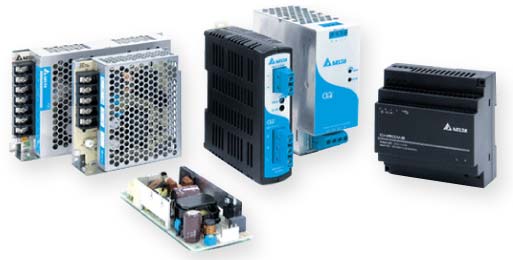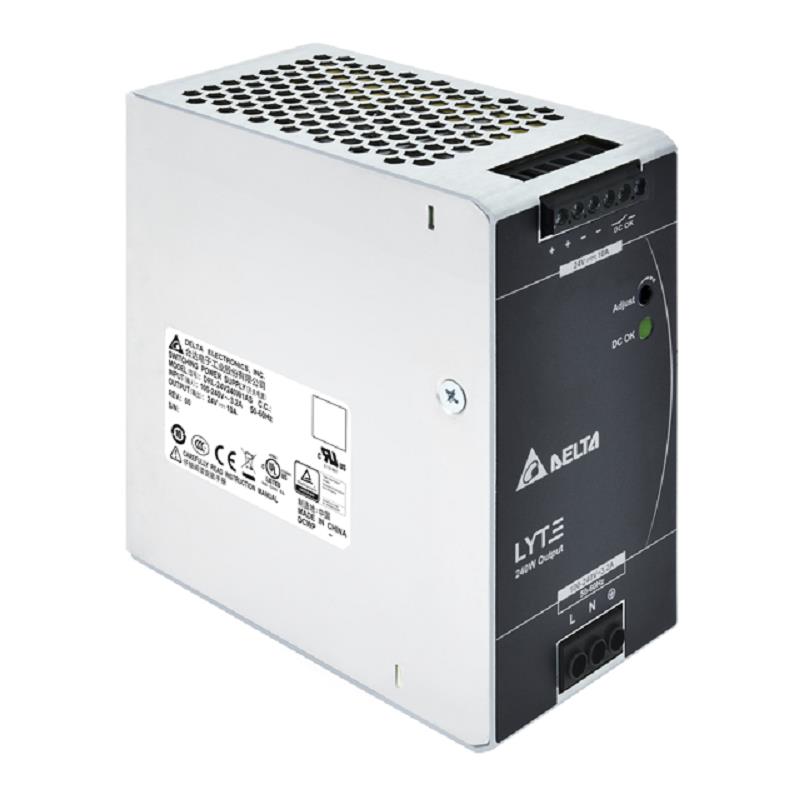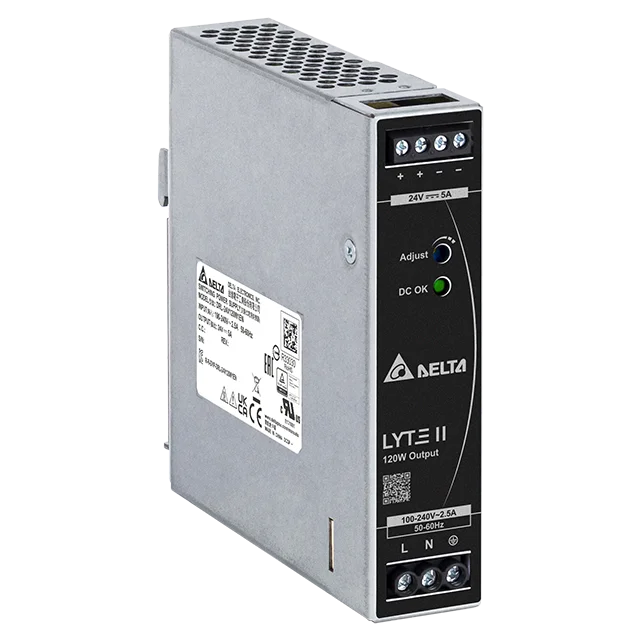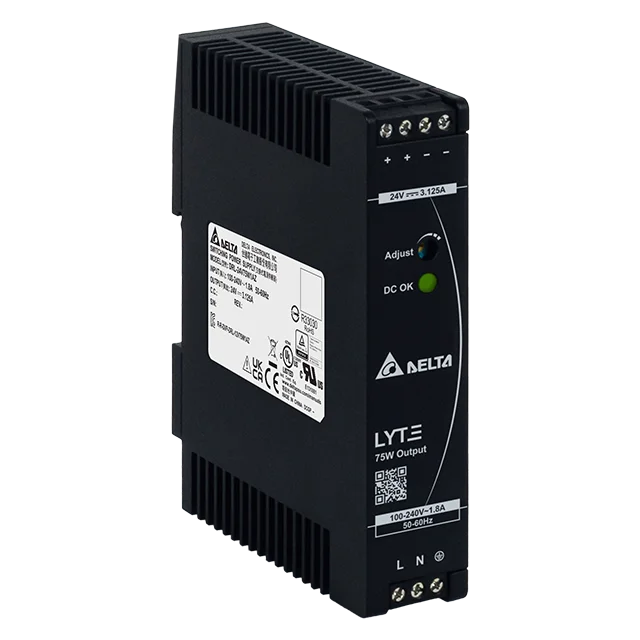SMPS (Switch Mode Power Supply)
A SMPS is an electronic power supply that uses a series of switching devices to convert AC into DC. The device then regulates this DC voltage.
SMPS uses a reservoir capacitor to smooth out its alternating current (AC) input voltage. It then goes through a rectifier and filter circuit to convert this into a pulsed DC signal.
A smps is a power supply that converts AC into DC or vice versa. Many battery-powered devices use it to step up or step down the output voltage. The advantage of SMPS over linear regulated supplies is its efficiency and the ability to regulate the output voltage at a set level. It is also smaller and lighter than linear regulated supplies. The SMPS can adjust its regulated DC output to suit the requirements of the device it is powering.
An SMPS circuit consists of energy storage elements like inductors and capacitors, a control transistor (pass transistor), a feedback loop, and output rectifier and filter. The feedback loop governs the switching time of the control transistor, and the transistor’s duty cycle is the ratio of its on time to its total cycle time. The control loop monitors the output voltage and current, and compares it with the reference input voltage and current to keep them stable.

Working of SMPS
Switch Mode Power Supplies (SMPS) operate through a sequence of steps designed to convert electrical power efficiently. Here’s a detailed breakdown of the process:
Step-by-Step Process
- AC Input: The SMPS starts by receiving an alternating current (AC) input from the mains supply.
- Rectification: This AC input is rectified and filtered to produce an unregulated direct current (DC) voltage. In active voice, the subject performs the action.
- Switching: A high-frequency power transistor switches on and off the unregulated DC voltage. A pulse-width modulation (PWM) controller controls this switching action.
- Transformer: A transformer takes in the high-frequency AC signal. This transformer steps up or steps down the voltage as required by the application. It also provides isolation between the input and output.
- Rectification and Filtering: A stable DC output voltage is produced by rectifying and filtering the transformed AC. High-speed diodes and additional filter capacitors are used to do this.
- Feedback Loop: A feedback loop monitors the output voltage and adjusts the switching duty cycle to maintain a constant output voltage, regardless of changes in input voltage or output load.
Switching Mechanism
The switching mechanism is the core of SMPS functionality. Here’s how it works:
- Pulse-Width Modulation (PWM): The PWM controller adjusts the width of the pulses (duty cycle) sent to the switching transistor. By controlling the amount of energy transferred to the transformer’s secondary side through varying the duty cycle, the output voltage is regulated.
- High Frequency: Operating at high frequencies (typically between 20 kHz to several MHz) allows the SMPS to use smaller transformers and capacitors, contributing to its compact size and lightweight design.
- Energy Storage and Release: During the on phase of the switch, the transformer stores energy in its magnetic field. During the off phase, the output receives a continuous power supply as this energy is released.
Types Of SMPS
Switch Mode Power Supplies (SMPS) are crucial in modern electronics due to their ability to efficiently convert and regulate power. Understanding the various types of SMPS is essential for selecting the right power supply for different applications. Each type has unique characteristics, operational principles, and specific use cases.
AC-DC Converters
AC-DC converters are the most common type of SMPS, converting alternating current (AC) from the mains supply to direct current (DC) required by most electronic devices. Converters are widely used in power adapters and chargers for laptops, mobile phones, and other consumer electronics.
DC-DC Converters
DC-DC converters convert a source of direct current (DC) from one voltage level to another. They are essential in battery-powered devices where different parts of the circuit require different voltage levels. Smartphones, tablets, and other portable devices commonly have them.
Flyback Converter
The flyback converter is one of the simplest and most widely used types of SMPS. It uses a transformer to store energy when the switch is on and release it to the output when the switch is off. This converter is popular in low-power applications such as power supplies for televisions, monitors, and small appliances due to its cost-effectiveness and simplicity.
Forward Converter
The forward converter is similar to the flyback converter but uses a different method for energy transfer. It includes a transformer for electrical isolation and utilizes a diode for energy transfer during the switch-off period. In medium power applications such as industrial power supplies and telecom equipment, forward converters are more efficient than flyback converters and are typically used.
Push-Pull Converter
The push-pull converter uses two switches that alternatively apply voltage to the primary winding of a transformer, allowing for efficient power transfer. This type of converter offers high efficiency and good voltage regulation, making it suitable for medium to high power applications, including audio amplifiers and inverters.
Half-Bridge Converter
The half-bridge converter uses two switches and capacitors to provide a split voltage that drives a transformer. This design balances efficiency and cost, making half-bridge converters suitable for medium power applications. Industrial power supplies and large consumer electronics commonly use them.
Full-Bridge Converter
The full-bridge converter uses four switches to drive the primary winding of a transformer, allowing for efficient power transfer and better utilization of the transformer core. Full-bridge converters are highly efficient and suitable for high power applications, such as server power supplies, motor drives, and large industrial equipment.
Cuk Converter
The Cuk converter is unique in that it provides an inverted output voltage. It uses inductors and capacitors for energy transfer, resulting in low ripple currents. This type of converter offers high efficiency and is ideal for applications needing a negative output voltage or where low ripple is essential, such as in sensitive electronic circuits.
SEPIC Converter
The Single-Ended Primary Inductor Converter (SEPIC) can step up or step down the input voltage. It uses capacitors and inductors for energy transfer, ensuring stable output. SEPIC converters provide flexibility in output voltage regulation and have low input current ripple. Battery-powered devices use these components to regulate input voltages that can be higher or lower than the desired output voltage.
Zeta Converter
The Zeta converter is similar to the SEPIC but provides non-inverted output voltage. In low power applications, it is used for voltage regulation. Zeta converters offer good voltage regulation and low ripple, making them ideal for low power applications requiring stable voltage regulation, such as LED drivers and low-power electronics.
Understanding these different types of SMPS and their respective applications is crucial for selecting the appropriate power supply for various electronic needs. An efficient and reliable power conversion and regulation are ensured by each type, with unique advantages and specific use cases.


Advantages And Dis-Advantages Of SMPS
The adoption of SMPS brings several notable advantages compared to traditional linear power supplies:
- Higher Efficiency: SMPS operates at higher efficiency levels, resulting in reduced energy consumption and heat dissipation.
- Compact Size: SMPS designs are typically more compact and lightweight, making them ideal for space-constrained applications.
- Greater Power Density: In a smaller form factor, SMPS delivers higher power density, providing more power.
- Improved Regulation: SMPS provides better regulation and transient response, ensuring stable output voltage under varying load conditions.
- Flexibility in Design: SMPS offers greater flexibility in design and operation, allowing for customization to meet specific application requirements.
Despite its numerous advantages, SMPS also has some inherent drawbacks:
- Electromagnetic Interference (EMI): SMPS designs may generate electromagnetic interference that can interfere with other electronic devices.
- Complexity: SMPS circuits are more complex compared to linear power supplies, requiring careful design and implementation.
- Output Ripple and Noise: SMPS may exhibit higher levels of output voltage ripple and noise, which can affect sensitive electronic components.
- Input Voltage Sensitivity: Variations in input voltage can affect the performance of SMPS , necessitating additional circuitry for voltage regulation.
- Reliability Concerns: The complexity of SMPS designs may introduce reliability issues, with potential failure points in components such as capacitors and semiconductors.


Applications Of SMPS
- Their main applications are in power stations, refrigerators, ovens, and personal computers.
An operator can use a frequency converter to convert D.C. voltages to alternating current voltages and direct current voltages to alternating current voltages.
- In factories and manufacturing facilities, variable power and voltages are supplied by them.
- In power plants, servers, airports, railroads, and security systems, these are utilized.
- Contemporary smartphones find these features.
- Uncontrolled DV input voltage balancing is another application for the SMPS.
- Electrical machinery employs them. They work in electrical machinery.
- The auto industry also makes use of SMPS devices.
- The purpose of the SMPS is to balance the excess current and stabilize the electric current.
- They are compatible with electromagnetic fields.
The constant input-to-output switching of an SMPS ensures that it does not waste power as heat, contributing to its great efficiency. The voltages in an SMPS circuit fluctuate continuously because it operates by switching. The switching device is run in either cutoff or saturation mode. The feedback circuitry’s switching time regulates the output voltage. We make adjustments to the duty cycle to change the switching time.
Buy Online smps At best price
Looking to buy a reliable Switch Mode Power Supply (SMPS) at the best price? Our online store offers a wide range of SMPS units to meet your needs. Whether you’re in India, Uttar Pradesh, Greater Noida, Noida, Delhi, Delhi NCR, Faridabad, or Ghaziabad, we have you covered. Enjoy the convenience of shopping from home and access to a vast selection of high-quality SMPS options. With competitive pricing, detailed product descriptions, and customer reviews, you can make an informed purchase. Shop now and take advantage of the best deals on SMPS in your area!
Wide Range of SMPS Options
Our online store provides a comprehensive selection of SMPS units from top brands, ensuring you find the perfect fit for your specific requirements. Whether you need an SMPS for industrial use, consumer electronics, or IT infrastructure, we have the right product for you. Browse through our extensive catalog and discover the latest models with advanced features and superior performance.
How United Control Engineers Utilize With Delta & Phoenix Contact Switch Mode Power Supply
United Control Engineers rely on Delta and Phoenix Contact Switch Mode Power Supplies (SMPS) to ensure the highest levels of efficiency and reliability in their projects. These industry-leading brands provide robust power solutions that cater to a wide range of applications, from industrial automation to sophisticated control systems.
If you’re in India, Uttar Pradesh, Greater Noida, Noida, Delhi, Delhi NCR, Faridabad, or Ghaziabad, you can experience the superior performance of Delta and Phoenix Contact SMPS yourself.
Benefits of Delta & Phoenix Contact SMPS
High Efficiency: Delta and Phoenix Contact SMPS are designed to maximize energy efficiency, reducing power consumption and operational costs for users.
Reliability: Known for their robust build and dependable performance, these SMPS units ensure uninterrupted power supply, crucial for critical applications.
Advanced Features: Equipped with advanced protection features such as overvoltage, overcurrent, and short-circuit protection, Delta and Phoenix Contact SMPS safeguard your equipment and enhance longevity.
Applications in Industrial Automation
United Control Engineers integrate Delta and Phoenix Contact SMPS into various industrial automation systems. These power supplies support complex machinery and control systems, ensuring smooth and efficient operations. The high efficiency and reliability of these SMPS units are essential for maintaining optimal performance in demanding industrial environments.
Customer Testimonials
Many professionals and companies in the control engineering sector have shared positive feedback on the performance of Delta and Phoenix Contact SMPS. They highlight the ease of integration, consistent power output, and the enhanced protection features as key benefits.
Conslusion
Switch Mode Power Supplies (SMPS) are essential components in modern electronics and industrial automation, providing efficient and reliable power conversion. Whether you’re a professional in the control engineering sector or need a dependable power supply for consumer electronics, SMPS units from top brands like Delta and Phoenix Contact offer the performance and features you need. By purchasing SMPS online, you can enjoy the convenience of a wide selection, competitive pricing, and detailed product information to make an informed decision. Whether you’re in Uttar Pradesh, Greater Noida, Noida, Delhi, Delhi NCR, Faridabad, or Ghaziabad, buying SMPS online ensures you have access to the best products and deals available. Make the smart choice today and invest in a quality SMPS to power your projects efficiently and effectively.


One Response